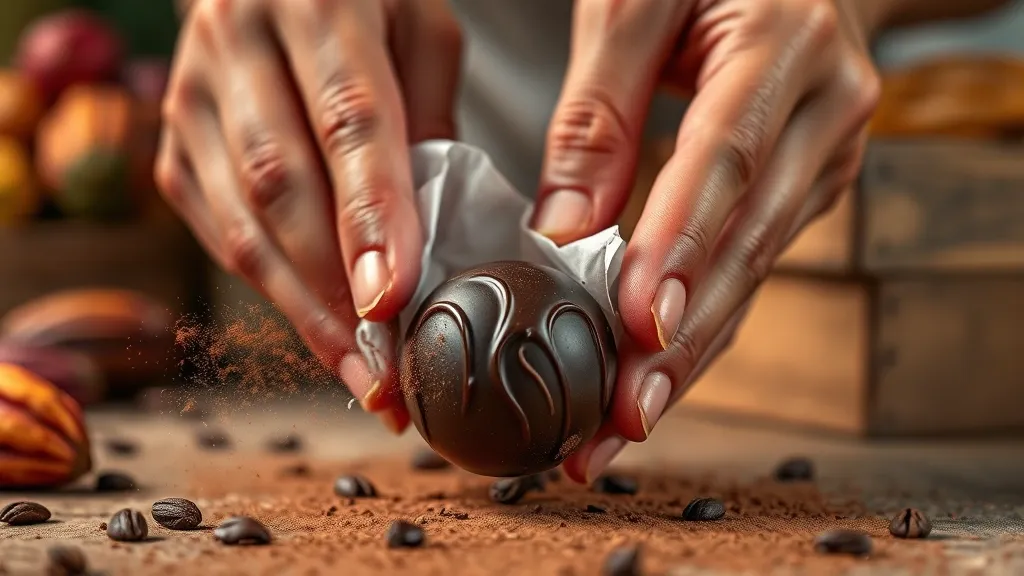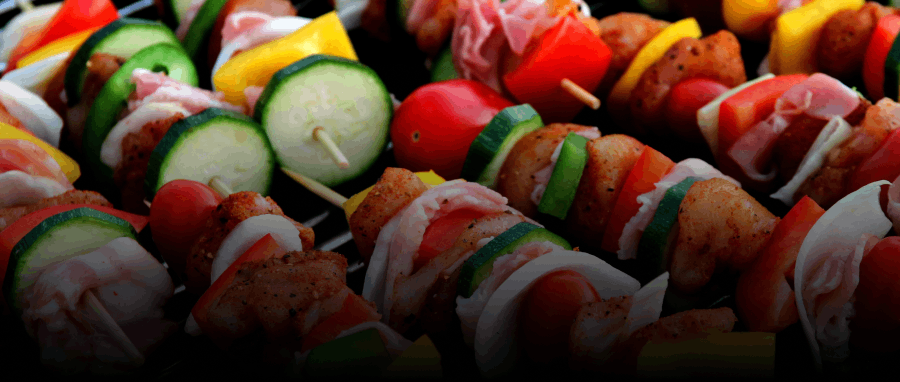Cocoa Chronicles: A Journey Through Time
Alright, folks, let’s take a little stroll through the history of cocoa. It’s a wild ride that’s packed with twists, turns, and a whole lot of chocolate goodness! Grab your favorite bar (or two, no judgment here) and let’s dive in.
First off, did you know that cocoa has been around for thousands of years? Yup, it dates back to the Olmec civilization in Mesoamerica around 1500 BC. They were the first to cultivate the cacao tree, and honestly, I can’t help but think they were onto something huge. I mean, who wouldn’t want to be the first to discover the magic of chocolate?
Fast forward a bit, and we land in the Mayan and Aztec cultures. They took cocoa to a whole new level, using it to make a drink called xocolatl. Picture this: a frothy, bitter concoction that was often spiced up with chili or vanilla. Sounds intense, right? But hey, it was considered a divine drink, reserved for the elite. Imagine sipping on that at a fancy dinner party!
- The Mayans even used cacao beans as currency. Yep, you could buy stuff with chocolate!
- Meanwhile, the Aztecs believed cacao was a gift from the gods. I guess they were onto something with that whole divine drink idea.
Then, in the 16th century, chocolate made its way to Europe. Enter the Spanish, who sweetened it up with sugar and cinnamon. Suddenly, everyone was going gaga for cocoa! It became the drink of choice for royalty and the elite. Can you imagine the parties? “Oh darling, would you like some chocolate? It’s divine!”
As we rolled into the 19th century, things got even crazier with the invention of the chocolate press, which made chocolate bars possible. Thank you, technology! And by the time we hit the 20th century, chocolate was everywhere. I mean, it’s hard to walk into a store without tripping over a chocolate bar or two.
Today, chocolate is a global phenomenon. From dark to milk to white (yeah, I know, it’s technically not chocolate but let’s not get into that debate), there’s something for everyone. And honestly, with all the crazy flavors popping up—like chili chocolate or sea salt caramel—can you even imagine what the ancient civilizations would think? They’d probably be like, “What’s next? Chocolate pizza?”
So, next time you unwrap a chocolate bar, just think of the incredible journey it took to get to you. From ancient rituals to modern-day indulgence, cocoa really has a rich history that’s as sweet as the treat itself. Cheers to that!
The Science of Sweetness: Why We Crave It
You ever wonder why you can’t resist that chocolate bar staring at you from the store shelf? I mean, it’s practically calling your name, right? Well, turns out there’s some real science behind our sweet cravings, and it’s pretty fascinating! Sweetness isn’t just about taste; it taps into our biology, psychology, and even our history. So, let’s unwrap this sweet truth.
First off, our love for sweet things goes way back. Like, way back. We’re talking ancient human history! Sweetness signals that a food is high in energy and safe to eat. In nature, sweet usually means ripe and ready for munching. So, our ancestors were hardwired to seek out sugary foods for survival. I guess you could say we’re all just a bunch of evolved sugar hunters!
Now, there’s this little thing called dopamine—ever heard of it? It’s a neurotransmitter that plays a big role in how we feel pleasure. When we indulge in something sweet, our brain releases dopamine, giving us that feel-good high. It’s like a mini party in your head! And who doesn’t want to celebrate with chocolate? Just saying!
But wait, there’s more! Studies show that when we consume sugar, it can actually reduce stress and anxiety, at least temporarily. It’s like a cozy blanket for your brain. Of course, we can’t rely on chocolate to solve all our problems, but in that moment, it sure feels nice. Just be careful not to turn into a chocolate monster—moderation is key!
- We’re hardwired to crave sweetness.
- Dopamine = happy brain party.
- Sugar can provide temporary stress relief.
And let’s not forget about how our environment influences our cravings. Ever walked by a bakery and felt your mouth water? Yeah, that’s not just you—it’s your brain responding to the sweet smells wafting through the air. It’s like your senses are throwing a dance party, and all they want is a piece of chocolate cake! It’s hard to resist, especially when life gets hectic.
So, the next time you find yourself reaching for that chocolate treat, remember: it’s not just your sweet tooth—it’s science! Our bodies and brains have a deep-rooted relationship with sweetness that goes back to our ancestors. And honestly, who can blame us for wanting a bit of joy in a bar of chocolate?
Chocolate’s Secret Life: Beyond the Bar
Alright, let’s dive into the not-so-secret life of chocolate. You might think chocolate’s just a sweet treat we grab when we need a pick-me-up (and let’s be real, who doesn’t reach for a bar during a Netflix binge?). But there’s way more to this delicious confection than meets the eye.
First off, did you know chocolate’s been around for over 3,000 years? Yeah, ancient civilizations like the Olmecs and Maya were all about that cacao life. They didn’t just munch on it; they made drinks out of it, often mixed with spices and chili peppers. Sounds a bit weird, right? But hey, they were onto something. Imagine sipping on a spicy hot chocolate while lounging in a hammock under a palm tree. Total vibe.
Now, let’s talk about how chocolate is made. It starts with cacao beans, which are harvested from cacao pods. These beans are fermented, dried, roasted, and then ground into a paste. This paste can either become chocolate liquor (not the party kind!) or be separated into cocoa powder and cocoa butter. It’s like the chocolate transformation show we never knew we needed. And if you think about it, the whole process is kind of miraculous. It’s like nature’s way of saying, “Hey, here’s some magic for your taste buds!”
- Fun fact: Cacao trees thrive only in certain tropical regions. So, if you’re planning to grow your own chocolate tree in your backyard, you might want to rethink that.
- Also, white chocolate? Not technically chocolate. It’s more like a sweetened cocoa butter with milk, which just makes it a fancy candy in my book.
And let’s not forget about the health benefits. Dark chocolate, in particular, is packed with antioxidants. Some studies suggest that it can improve heart health and even boost your mood. So, next time you’re indulging in a piece of dark chocolate, you can tell yourself it’s basically medicine. Just don’t go overboard and try to convince your doctor that chocolate bars should be part of your daily vitamins!
But honestly, chocolate is more than just a treat or a health hack. It’s a universal comfort food. Think about it: how many times have you reached for a chocolate bar after a long day? It’s like a little hug in a wrapper. So, whether you’re enjoying a fancy truffle or just a classic chocolate chip cookie, know that you’re partaking in a long history of sweetness that goes beyond just satisfying your cravings.
From Bean to Bliss: The Art of Crafting Chocolate
Ah, chocolate! That sweet little gift from the universe that makes everything better. But have you ever thought about how it goes from those humble little beans to the delicious bars we can’t resist? It’s actually a pretty fascinating journey, and I’m not just talking about the trip from the store to your mouth!
First off, let’s start at the beginning. Chocolate comes from cacao beans, which grow on cacao trees. These trees are pretty picky about where they grow—mostly in tropical climates. So, if you’re dreaming of a chocolate farm, you might wanna consider a move to somewhere nice and warm!
Once those beans are ripe, they’re harvested, and here’s where it gets interesting. The beans are actually surrounded by a sweet, white pulp. After they’re scooped out, they go through a fermentation process that’s crucial. It’s like giving them a little spa day. This step helps develop the flavor we all know and love. Who knew chocolate had such a glamorous life before it ends up in our hands?
After fermentation, the beans are dried and roasted. This is where the magic really starts to happen. Roasting brings out those rich flavors, and honestly, it smells amazing. I mean, if you could bottle that aroma, you’d have the world’s greatest air freshener! But seriously, the right roasting time can make a huge difference in the final taste, and chocolatiers often have their own secret techniques.
- Cracking and winnowing: This step separates the nibs from the shells. Think of it like a chocolate treasure hunt, where the nibs are the gems!
- Grinding: The nibs are ground into a paste called chocolate liquor. Fun fact: it’s not alcoholic, but it sure feels like a party when you taste it!
- Mixing: Here’s where sugar, milk (if you’re making milk chocolate), and other ingredients come into play. You could say this is chocolate’s version of a dance party!
- Conching: This is a fancy term for mixing the chocolate for hours to refine its texture. It’s like a workout for chocolate, and it gets smoother with each minute.
Finally, it’s tempered—this part is key for that shiny finish and satisfying snap we all love. Then, it’s molded and cooled, ready for us to unwrap and enjoy. So, the next time you indulge in a piece of chocolate, remember, it’s been on quite the journey. From bean to bliss, every bar has a story, and honestly, I think that makes it taste even sweeter!




